Is there one “best” Salesforce survey to get customer feedback? Let’s find out!
![]()
There are many different tools, apps and integrations you can use with Salesforce to survey your customers. Among these are three tested methods to gather customer feedback: Customer Satisfaction, Net Promoter Score and Customer Effort Score.
All three involve surveying customers, but they ask different questions and offer different insights. There’s lots of articles out there describing how to use each, but how do you decide between them?
In this post, we look at the advantages of each to help you choose which survey to use with your Salesforce account:
Customer Satisfaction (CSAT)
CSAT is the oldest method of surveying customers. While it’s been around forever (it’s earliest format was the ratings index for radio shows in the 1940s), it’s definitely not going out of style. It’s easy to set up, easy to reply to and provides a great overview of the customer’s satisfaction levels.
CSAT is measured by asking customers how they felt about the most recent interaction with the company. It can be phrased in a variety of ways:
- How satisfied are you with the service you received today?
- How nice was my reply?
- Did this answer your question?
- How would you rate your interaction with customer support?
The customer chooses their response on a scale from bad to good. CSAT surveys vary from just two options all the way up to a scale of 10. Nicereply surveys use a scale of 2 thumbs, 3 smileys or 10 stars, and allow multiple follow-up questions.
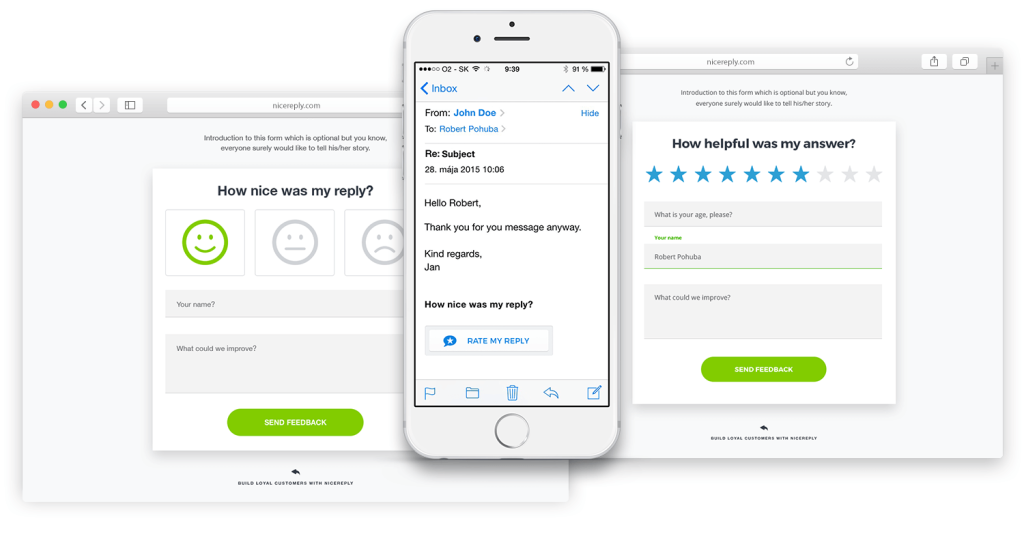
To calculate the CSAT score, subtract the % of customers who were unhappy from 100%. Nicereply displays scores as a value out of 10. When you integrate Nicereply with Salesforce, you can also see them right there in the form of a note.

Benefits of Customer Satisfaction
Customer satisfaction surveys is easy to set up with your Salesforce account. It’s simple for both customer and you to understand. There’s no room for misinterpretation. Anyone who sees a 80% CSAT score knows what that means. 8/10 customers were satisfied.
CSAT also has the advantage of being useful both for individual replies and complete interactions. You can attach a CSAT survey to every email, or only send out the survey when the conversation is marked complete.
By allowing customers to give feedback on every reply, it’s easy to spot when a conversation is going wrong. With other survey methods, you won’t receive feedback until everything is already wrapped up – meaning you miss the opportunity to recover earlier on.

Disadvantages of Customer Satisfaction
CSAT may give you an overview of how well are your conversations going, but it’s actually a very low predictor of loyalty. That means that customers who are “satisfied” on their last CSAT survey, still often end up churning, or cancelling.

Who should use Customer Satisfaction?
CSAT is a great first metric for support teams. It gives quick results, is easy to implement and simple to understand. Sales people, account managers and SDRs can also benefit from knowing how they customer feel throughout the whole conversation.

Net Promoter Score (NPS)
Net Promoter Score was designed to be the best metric to predict customer loyalty or churn. Reichheld found that the following question was the best at predicting a customer’s future behaviour:
“How likely are you going to recommend Company X to a friend or colleague?”
High NPS scores correlate strongly with repurchases, referrals, and overall growth, while low NPS scores correlate with churn, poor reviews and downsizing.
To measure NPS, customers are asked the above question and they respond on a scale from 1 (very unlikely) to 10 (very likely). If a customer answers lower than 6, they are a detractor. If they respond 9 or higher, they are a promoter. Customers responding 7-8 are passives.
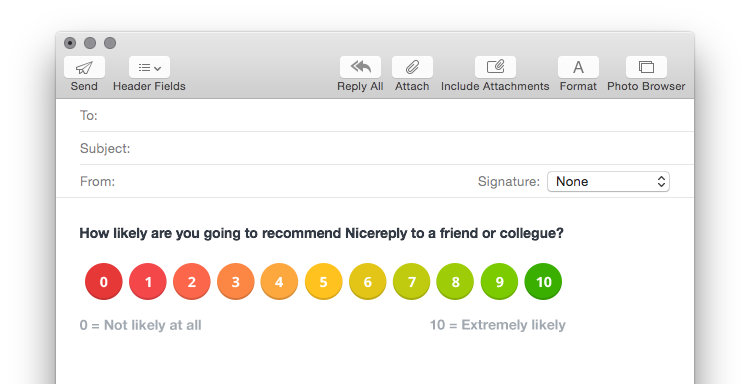
NPS is calculated by subtracting the % of customers who replied as detractors from the % of customers who answered as promoters. NPS scores are not a percentage and range from -100 (very bad) to +100 (very good).
Most NPS surveys also include a follow up question: “What is the main reason for this score?”

Benefits of Net Promoter Score
Unlike CSAT, NPS is a relational metric. Instead of attaching a response to a particular interaction, NPS measures the opinion of the customer throughout their lifetime. This means many different parts of the company factor into the NPS score. NPS is much better at predicting churn than CSAT as well as identifying advocates and potential referrals. Because NPS doesn’t focus just on one department, it can be very enlightening to the entire organization.

Disadvantages of Net Promoter Score
Often disadvantages are just the flip side of benefits. Because NPS measures the entire customer experience, it sometimes is not as helpful for a single team.

Who should use Net Promoter Score?
The NPS program can be owned by marketing, customer support, product, sales etc… Teams who have tried customer satisfaction surveys but still need to reduce churn will also find NPS useful. It’s also helpful to track over the lifetime of a customer (ie. post-onboarding, annually, etc) to see if customer happiness changes over time.
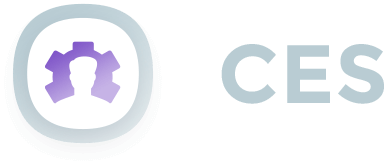
Customer Effort Score (CES)
CES measures how easy it is for customers to get a resolution to their issue on a scale of very difficult (1) to very easy (7). CES is a transactional survey meaning that it pops up after each interaction resolution a customer has with a business. The main idea is that customers will stay with a company longer if it is easier to do business with it. Teams using CES are able to find and eliminate friction points so customers come away happier.
To measure CES, once a conversation is marked resolved, email customers the CES survey question:
How much do you agree or disagree with the following statement?
“[The organization] made it easy for me to handle my issue.”
You can use Nicereply to measure your Customer Effort from your Salesforce account.
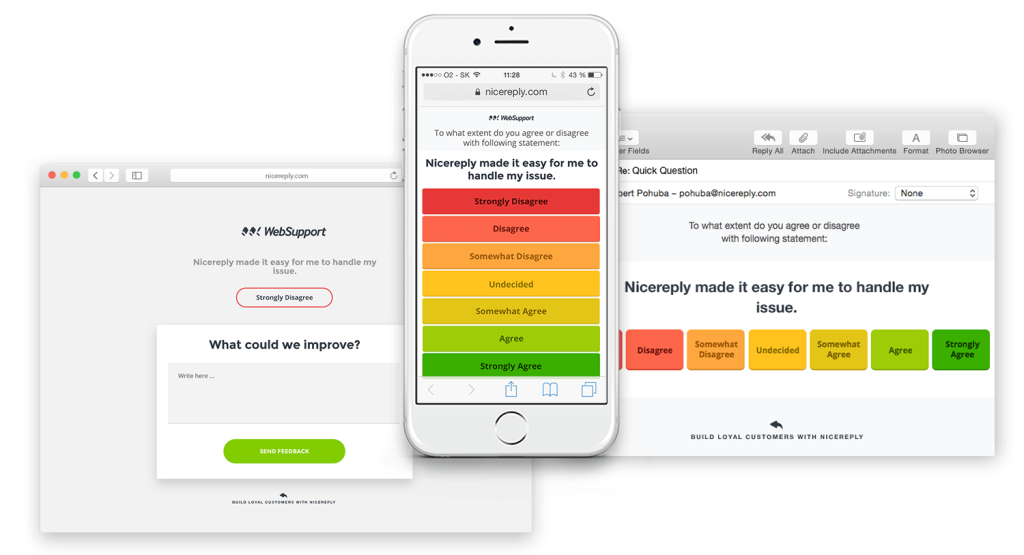
Customers answer on a scale from 1 (strongly disagree) to 7 (strongly agree). To calculate your CES score, average all results to give you one number out of 7. It’s also important to look at the distribution of the scores received.

Benefits of Customer Effort Score
Customer Effort Score is rising in popularity for a few reasons. First of all, it is the best predictor of customer’s future behaviour. According to published studies, CES is 1.8 times better at predicting customer loyalty than customer satisfaction and 2 times better than Net Promoter Score.
It can also be helpful to companies that have already achieved consistently high customer satisfaction scores. Because CES focuses on a different part of customer experience, you’ll see different areas of opportunity to improve.

Disadvantages of Customer Effort Score
Customer Effort Score is probably the most complex of these metrics. It won’t be intuitive to everyone, so you might have to educate other teams about the importance of an effortless experience. Customer Effort Score is also the newest of the three methodologies, which makes it harder to find best cases and data to benchmark with.

Who should use Customer Effort Score?
Teams with high CSAT scores will find CES helpful as it will give them new ways to improve. If you’re looking for a way to smooth out your CX, CES is definitely a methodology to consider.
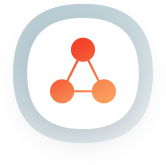
The Hybrid Model, not just one Salesforce survey
You don’t have to stick to just one metric in your company. The advantages of each work really well together.
You can use all of these customer surveys as well as mix and match them according to your need with Nicereply and your Salesforce. The real power of customer feedback comes from deeper analysis and combining data to get a more complete picture of your customer.
While there isn’t one “best” way to get customer feedback, every method has its own unique use cases. If you need help choosing the best one for your team, reach out to us at contact@nicereply.com and we’ll be happy to help.











